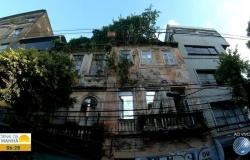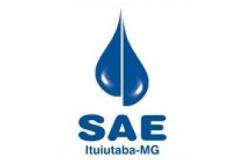She opened her path to professional life, as a journalist, in the late 80s and early 90s. She was a reporter committed to issues related to environmental preservation and social justice – or the lack thereof.
The research project was financed by the Municipal Cultural Fund, through FGB – Fundação Garibaldi Brasil/Photo: Provided
What is certain is that, at 55 years old, mother of two teenage children, journalist Alcinete Damasceno, although she has no employment relationship with companies, continues in action, now working in another field of communication: audiovisual production.
His latest work is a documentary about the metal bridge in Rio Branco, telling the saga of its construction and everything that involved Acre and Rio Branco whose populations, to cross the river on one side of the Capital and the other, depended on the catraia.
The documentary “Ponte de Memória” shows that the work emerged at a time when Acre was changing its economic profile, with the bankruptcy of rubber plantations, which is why large cargo ships also reduced the frequency of their trips to the region. This even caused the original design of the bridge to be changed. The main span, which would have been mobile, became fixed because, at that time, more than 50 years ago, it was concluded that large ships no longer sailed there.
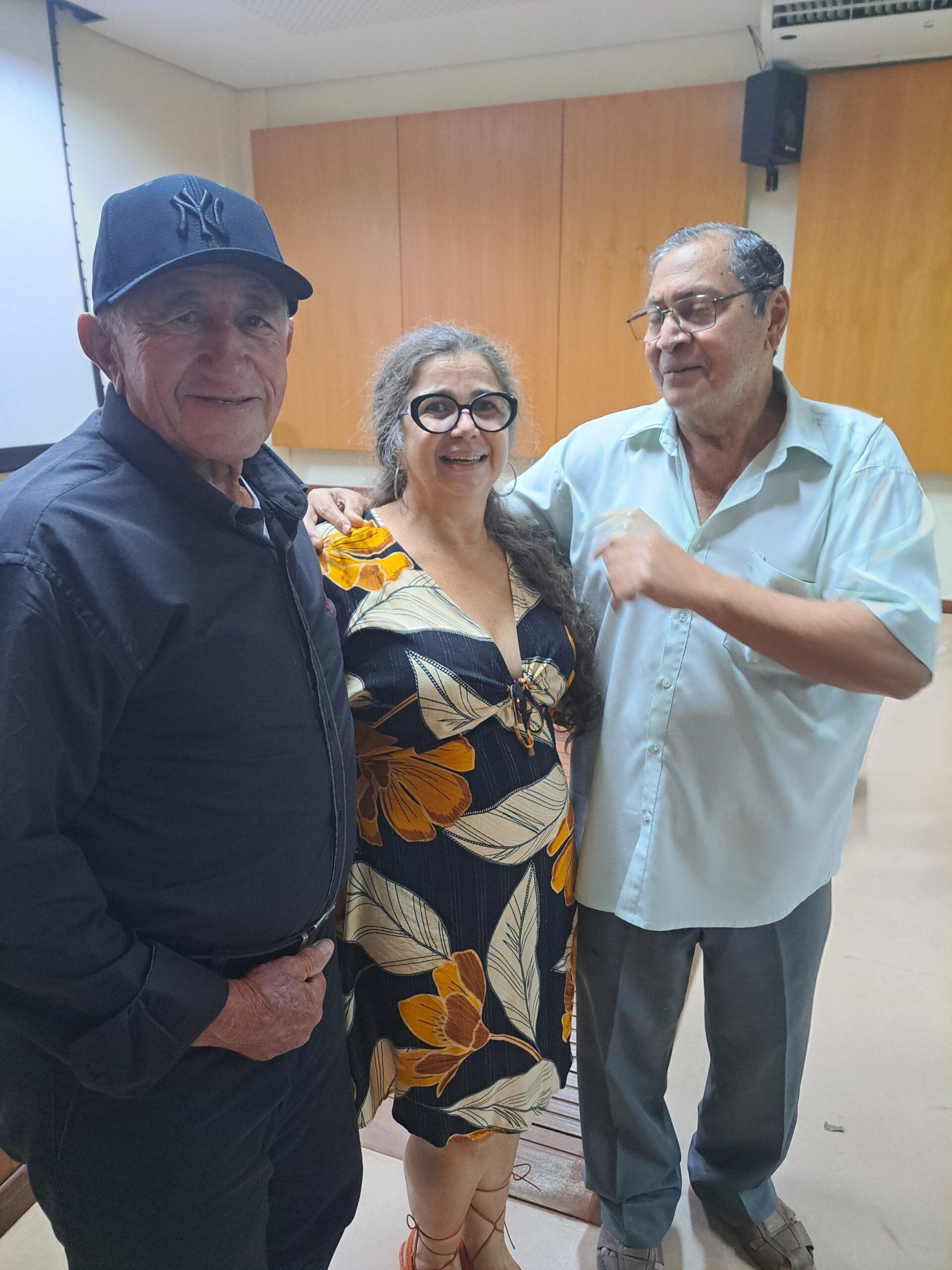
Alfredo Ribeiro (cap) worked as a pointman on the bridge in 67, perhaps the last living worker. He started working on the bridge at the age of 17/Photo: Provided
Finally, a 29-year-old documentary, with interviews with people who lived through the work, such as the merchant João Batista Queiroz, known as “Badate”, who passed by before the work began and who today maintains a commercial house at one of the headwaters of the river. bridge.
The documentary also features testimonies from historian Marcus Vinicius Neves and anonymous people who witnessed the construction of the bridge, including when it threatened to collapse or ended up collapsing later. An applied research work with the mark of Alcinete Damasceno’s competence and dedication.
Why the idea of retelling the story of the metal bridge?
Alcinete Damasceno – I have always been interested in the stories of our Acre. I like listening to the older residents talking about the past, the memories of the past. It’s all very cinematic – visually and narratively. I think our story is beautiful. The idea of a documentary about the metal bridge had been thought about for some time. The bridge is an important project for Acre. It’s a postcard of our city. It was the first major architectural and engineering project built in Rio Branco, the capital. A work that completely transformed life in the city and marked the beginning of a new era. The time of progress. In 1971, when the bridge was inaugurated at the end of Jorge Kalume’s government, Acre’s economy was no longer based solely on extractivism. After Kalume, governor Wanderley Dantas entered. At that time, there was a lot of incentive for southerners to come and occupy these lands and open farms to raise cattle. This was intensified under Dantinha’s government. A new economy began to emerge in Acre. Rubber, which used to be Acre’s main export product, no longer had much of a market abroad. Likewise, chestnut.

Dona Gilcélia Rocha da Luz (second from left to right) is the daughter of the oldest catraieiro, José da Rocha, who cut the ribbon at the inauguration of the bridge/Photo: Provided
With the documentary, is it possible to portray the difficulties of life in Acre in a time of inferior technology to what we have today?
Alcinete Damasceno – Yes. Little by little, everything changed. The rubber plantations were being abandoned and transformed into cattle pastures. And this bridge is a historic milestone in this transition. It symbolizes this change of times in Acre. We can date what changed after its construction. Including the geographic, cultural, commercial and social landscape. In fact, everything changed with the construction of the metal bridge, although shortly afterwards a new bridge – the concrete one (Coronel Sebastião Dantas) was also built nearby. The documentary explored a little of the history of Acre based on this special work of art that is the Juscelino Kubitschek Bridge. We went to Acre Federal Territory during the period in which the construction project for the bridge over the Acre River began to investigate how this process took place until the work was completed. “Bridge of Memories” brought to light important revelations about the State’s past, about the crossing into a new time. In addition to the historical facts that motivated me to carry out the project, I like to cross the old bridge on foot to enjoy the sunset from there. I find it very poetic. Inspiring. At night, it is also beautiful to see the moon from the riverbank. This landscape enchants me. The river crossing, the boats going up and down, with that characteristic noise of outboard motors. All of this is very Acreian. It’s an emotional relationship I have with the bridge and the river. It is difficult for any former residents of the city to not have an affectionate memory of the metal bridge.
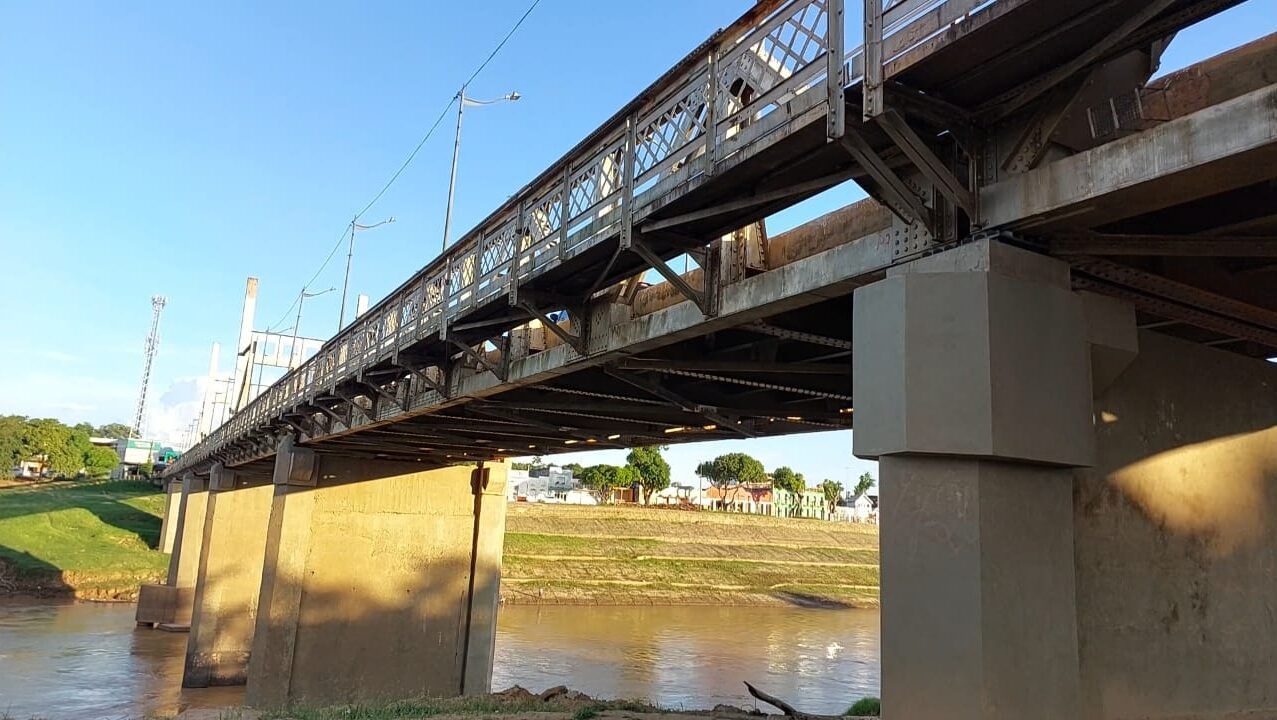
The documentary “Ponte de Memória” shows that the work emerged at a time when Acre was changing its economic profile/Photo: Provided
How many minutes is the documentary and who is it intended for as a viewer?
Alcinete Damasceno – The final cut of the documentary was 29 minutes long. It’s a film that interests the community. It is well put together, well structured narratively and provides an easy-to-understand outline of the story. In addition to the documentary research, the testimonies of the characters whose stories were crossed by the bridge are very rich and interesting. Characters who witnessed, worked and followed the entire process of building the bridge and the changes that occurred in our city during that period. We also have the participation of a historian who weaves the narrative.
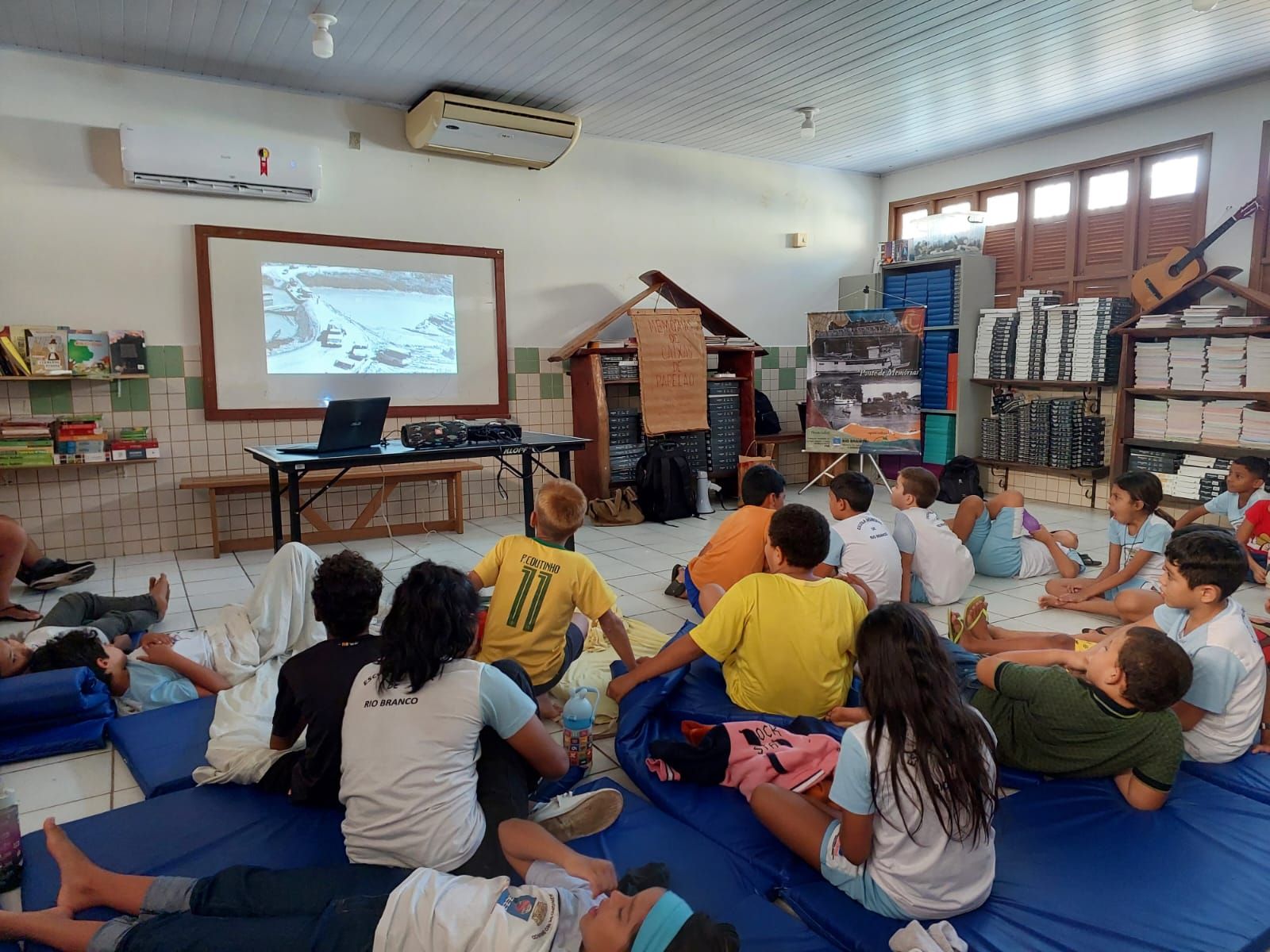
An applied research work with the mark of competence and dedication of Alcinete Damasceno/Photo: Provided
Is the work completed?
Alcinete Damasceno – The documentary is not finished. This was a cut to meet the execution of the project with exhibitions in the planned locations. Later on, we will request financial resources in a public notice for completion and later for circulation with exhibitions for the community in general. We have concluded, for now, the research, which was the project contemplated by the Municipal Culture Fund.

Alcilene recording statements/Photo: Provided
Does the short film then show the difficulty of a Rio Branco without a bridge and which depended on the catraias?
Alcinete Damasceno – I believe that before the bridge the biggest difficulty was actually the issue of transport. Without the bridge, vehicle traffic between the two districts, despite there being few cars at the time, only happened via Pelada – the ferry that crossed from one side of the river to the other. People crossed via catraias, which for many years was the only means of transport from the first to the second district. Everyone had to cross the river by catraia. From bohemian to student. From authority to the simplest worker. Without the catraieiro, life in the city would come to a halt. All these issues are addressed in the short film.

“We need more investment in historical research, documentary records and technology so that Acre’s history can be known”, said Alcilene/Photo: Provided
Was it supposed to be a bridge that opened the gap in the middle for ships to pass through? And why did they change the original project?
Alcinete Damasceno – In fact, the original project called for raising the central gap for the passage of ships, but this idea was abandoned because, with the change in the extractive economy of the rubber plantations, Acre no longer received large ships that brought goods and took rubber, chestnuts and wood to Manaus and Belém. The opening of BR 364 also facilitated the arrival of goods by road. Today the pulleys that would be used to lift the central span are monuments at the head of the bridge. They serve to tell the story.
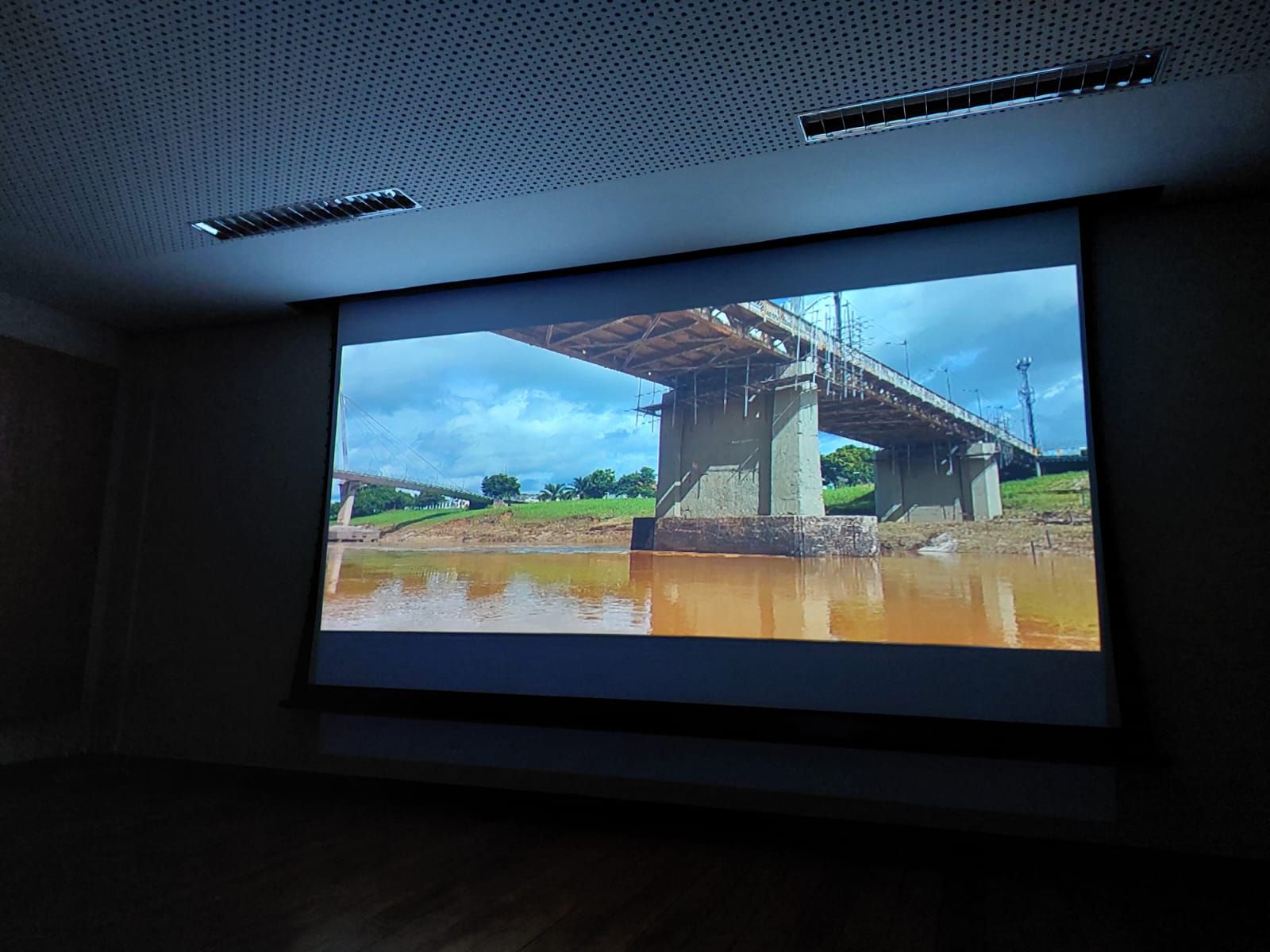
Screening of the documentary for the characters, their families and guests/Photo: Provided
After so long, is it safe to say that the bridge is safe?
Alcinete Damasceno – We recorded the first rafters going down the river when we started recording the documentary and in a few days we saw the water reach very close to the bridge deck. I was scared by how quickly the river flooded and overflowed its banks. It was very fast. The Acre River is a radical river. It is very dry and, when it fills, it spreads water everywhere. The JK bridge was supposed to be bigger and taller in the original design. There were many changes. It would start, for example, at the end of Getúlio Vargas, where Poupança Banacre was, following the flow of the Avenue. Today, we are living in a time of climate uncertainty, of drastic changes in the volume of rainfall in the region, and this, perhaps, could be a situation that always requires special attention to the bridge. This year, I observed the Deracre staff working to prevent the accumulation of rafters on the bridge structure. There was always a team and boats directing the boat so as not to run aground on the piers. The maintenance that was carried out recently repaired many problems resulting from natural wear and tear due to the length of the work, but I don’t know if there are studies to increase the height of the bridge.

The documentary “Ponte de Memórias” is a 29-minute short film. It’s a good time for films to be shown in schools/Photo: Provided
The bridge has already collapsed in part and in recent years it has had to be closed. Is anyone passing by there at risk?
Alcinete Damasceno – The bridge collapsed in 1978 a few years after it was built. It was closed for a while and then they improvised a wooden walkway for the population to cross over it. The span that fell was rebuilt and there was no longer any risk of the pillar moving. The maintenance carried out recently on the bridge used modern technology that guarantees the safety of the population.

People who were unable to attend the screenings received a digital link to watch the film from anywhere in Acre and the country/Photo: Provided
Can the documentary become a film? What is missing?
Alcineta Damasceno – The documentary “Ponte de Memórias” is a 29-minute short film. It’s a good time for a film to show in schools. That’s why we made it this long, even though the story of the JK bridge could be turned into a feature-length documentary film lasting more than an hour. It is a very rich, beautiful and unusual story. The only thing missing is financial resources so that we can invest in the production of a film telling more details about the saga involved in building the first bridge over the Acre River. At the conclusion of the project, which now takes place in April, we will exhibit the results of the research in schools in the state and municipal education network, also at SESI, at the settlers’ market, at the Acre film library, CRAS, POP center. There was a special screening for the characters, their families and guests. It will also be exhibited in May, at the Senama Nacional de Museus. People who were unable to attend the screenings received a digital link to watch the film from anywhere in Acre and the country. Ponte de Memórias is originally a research project that was approved and financed by Notice 07/2023 of the Rio Branco Municipal Culture Fund, through the Garibaldi Brasil Foundation.
Are there any other projects of yours coming to rescue history?
Alcinete Damasceno – I have several project ideas to tell our Acre stories. Some are priority because the characters are already old and many memories are lost over time. The city is also transforming rapidly and we are not recording for posterity aspects of the architecture, landscape and customs of our people. But we have to find resources to produce these films. Audiovisual production has a high cost to carry out. We only have the notices to submit projects and obtain resources. It doesn’t always work out. Acre needs to have a Memory Center or Image and Sound Museum so that our history is preserved, told and retold for generations. We need more investment in historical research, documentary records and technology so that Acre’s history can be known and accessed by the population of the state and anywhere in Brazil and the world.
Who sponsors the project?
Alcinete Damasceno – The research project was financed by the Municipal Cultural Fund, through FGB – Fundação Garibaldi Brasil).
Tags: Journalist documentary construction history Metallic Bridge engineering project Acre
--











